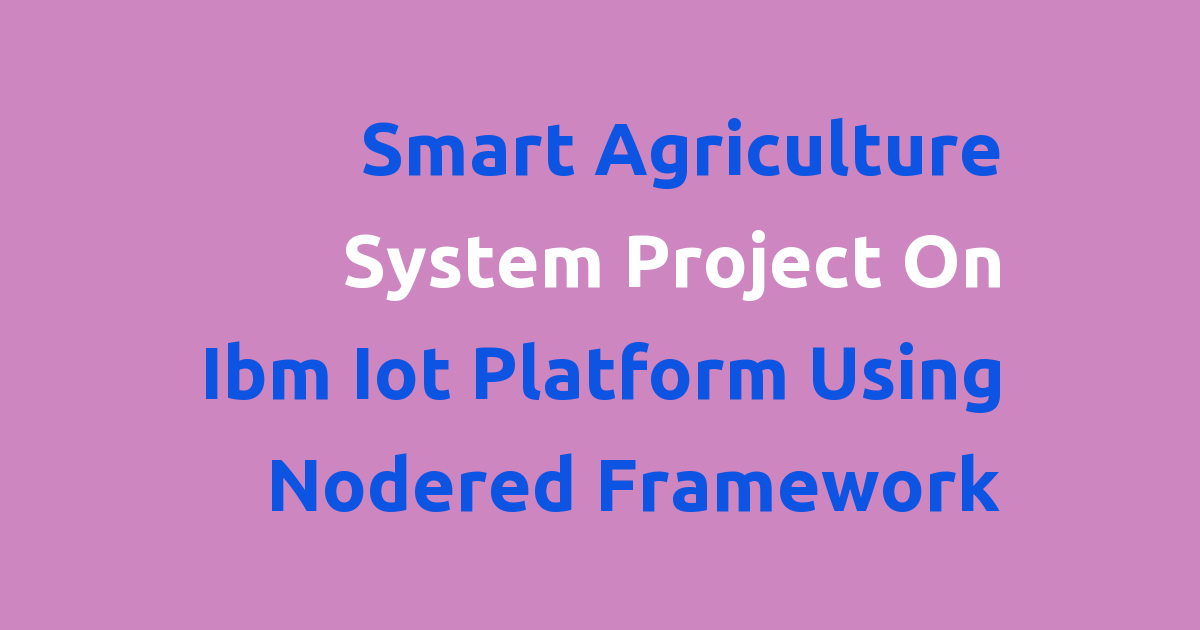A smart agriculture system project utilizing the IBM IoT platform with the Node-RED framework.
Smart Agriculture System Project on IBM IoT Platform using NodeRed Framework
Introduction
In recent years, the agriculture sector has witnessed a significant transformation due to advancements in technology. One such innovation is the implementation of smart agriculture systems that leverage the Internet of Things (IoT) to improve farming practices. This project focuses on utilizing the IBM IoT platform along with the NodeRed framework to create a smart agriculture system that can monitor and control various aspects of farming activities.
Problem Statement
Traditional farming methods are often inefficient and labor-intensive, leading to decreased productivity and increased costs. Farmers face challenges such as unpredictable weather conditions, pest infestations, and soil nutrient deficiencies, which can negatively impact crop yields. There is a need for a smart agriculture system that can provide real-time monitoring and decision-making capabilities to address these issues effectively.
Existing System
The current agricultural practices rely heavily on manual labor and guesswork, resulting in suboptimal outcomes. Farmers often struggle to keep up with changing environmental conditions and lack the tools to make informed decisions. This leads to wastage of resources and reduced profitability in the long run.
Disadvantages
– Lack of real-time monitoring
– Inefficient resource utilization
– Limited access to data for decision-making
– High dependency on manual labor
– Vulnerability to environmental risks
Proposed System
The proposed smart agriculture system aims to address the limitations of the existing system by incorporating IoT sensors, actuators, and data analytics tools. By leveraging the IBM IoT platform and NodeRed framework, farmers can collect and analyze data on soil moisture levels, temperature, humidity, and pest infestations in real-time. This data can then be used to automate irrigation, fertilization, and pest control processes, leading to increased efficiency and higher crop yields.
Advantages
– Real-time monitoring of farm conditions
– Data-driven decision-making
– Automated control of irrigation and fertilization
– Reduced labor costs
– Improved crop quality and quantity
Features
– IoT sensors for monitoring environmental conditions
– Data analytics tools for insights and recommendations
– Automated control of irrigation systems
– Remote access and control via a mobile app
– Alerts and notifications for timely interventions
Conclusion
In conclusion, the implementation of a smart agriculture system on the IBM IoT platform using the NodeRed framework has the potential to revolutionize the farming industry. By harnessing the power of technology, farmers can optimize their operations, increase productivity, and ensure sustainable practices for the future. This project serves as a stepping stone towards a more efficient and profitable agricultural sector in India.

